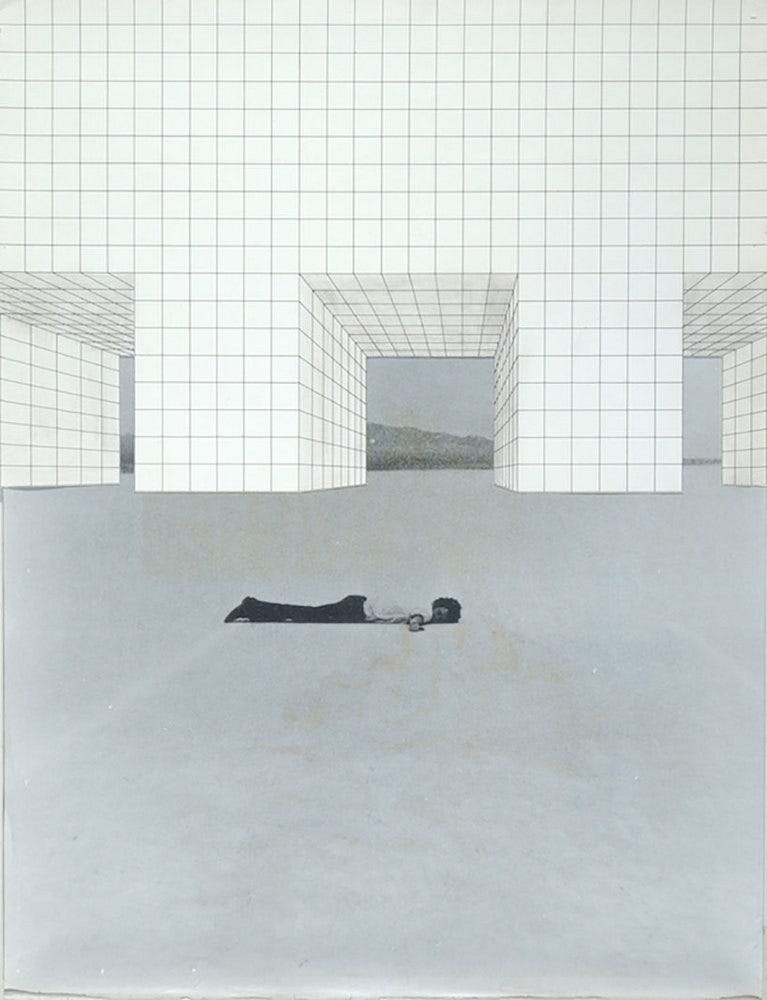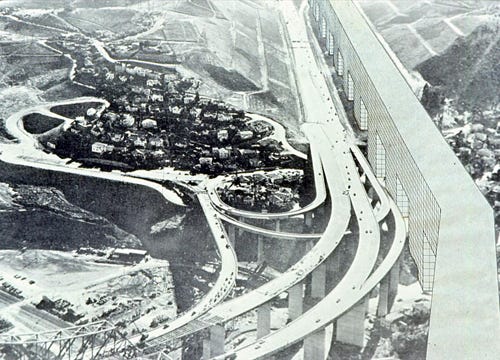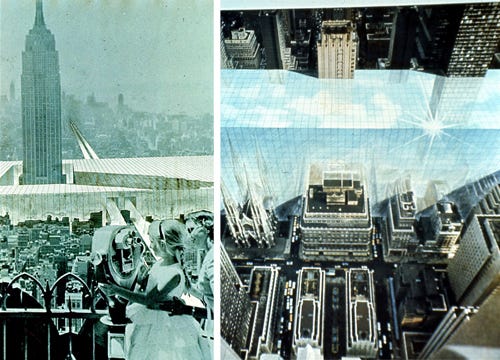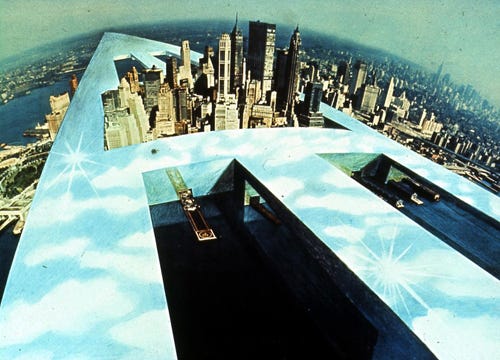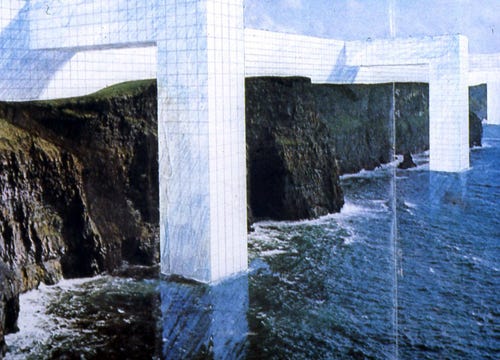The Infinite Grid: Superstudio's Visionary Critique of Modern Architecture
How The Continuous Monument Redefined Utopia, Dystopia, and the Power of Architectural Thought
Ever felt trapped by the world around you? What if the spaces you inhabit weren’t designed to serve you, but to control you?
Superstudio’s visionary critique of architecture will make you question whether freedom is just an illusion.
The 1960s was a tumultuous period for architects. While modernism dominated the ideological and aesthetic landscape, it also began to show its cracks. Some architects embraced modernism wholeheartedly, pushing its principles of functionality and rationality to new heights. Others, like Archigram, recognized that architecture needed to transcend mere utility to thrive.
It was an era where manifestos became the architects' medium of choice — provocative, bold, and unapologetically unconventional. Within this ferment of radical thought emerged Superstudio, founded in 1966 in Florence by Adolfo Natalini and Cristiano Toraldo di Francia. Inspired by the Radical Architecture Movement, Superstudio became a cornerstone of conceptual, paper-based architecture, challenging the very foundation of architectural practice.
Superstudio sought to redefine architecture not as a medium for physical construction but as a platform for critical reflection. For them, the architectural drawing was not a blueprint for reality but a space to critique consumerism, homogenization, and the socio-political norms of the time. Their speculative proposals were not just visual provocations but philosophical inquiries: Could architecture exist without form? Could it shape not just buildings but also societies?
The Continuous Monument: A Grid Without End
"The Continuous Monument takes to the limit the modern distinction between natural and artificial, and opens the way to a new hybrid philosophy of reconstructing the relations between architecture and nature, in which the two terms blend in a single design."
—Cristiano Toraldo di Francia
In the late 1960s, Superstudio unveiled their most iconic project, The Continuous Monument. Through a series of speculative collages and photo realistic drawings, they depicted a massive, reflective, grid-like megastructure that extended infinitely across diverse landscapes—deserts, oceans, and cities. This surreal vision fused realism with speculation, creating a provocative tension between what is and what could be.
The Continuous Monument appeared as an omnipresent geometric form, often a rectangular grid or slab that dominated its environment. Its reflective surfaces, simultaneously intrusive and camouflaged, blurred the line between visibility and invisibility. It was, as Rem Koolhaas later observed in Delirious New York, an exploration of the grid as “a conceptual speculation… indifferent to topography, to what exists, claiming the superiority of mental construction over reality.”
The grid became a symbol of uniformity, repetition, and dehumanization—architecture reduced to a tool of control. Superstudio’s vision was not a utopian dream of progress but a critique of it, a negative utopia, an exaggerated warning about the consequences of blind faith in technological advancement, capitalism, and global standardization.
The Continuous Monument highlighted the homogenizing effects of globalization, which threatened to erase cultural diversity, natural landscapes, and the unique identities of places. Its reflective, glossy surfaces blend slightly into the environment, making the structure appear simultaneously intrusive and camouflaged, as if it could be both everywhere and nowhere.
A Paradox of Utopia and Dystopia
Superstudio’s project used demonstratio per absurdum—a method of critique through exaggeration—to expose the absurdity of unrestrained architectural ambition. The structure’s utopian promise of universal unity was juxtaposed with its dystopian implications: the grid as a tool for conformity, erasure, and control.
It's a haunting reminder of the thin line between visionary utopias and dystopian realities. And as we observe more closely to its photorealistic visuals, it becomes a reflection of human ego. Its perfect geometry reflects humanity’s obsession with order and control, acting as a mirror of human hubris: the belief that we can impose our will upon nature without consequences.
By proposing an architecture that was both all encompassing and oppressve, they illustrated how architecture could become a tool for control and conformity of society. Its reflection as a utopian image juxtaposed with its intention of a dystopian warning, potentially concerning the dangers of unchecked architectural ambitions.
The Continuous Monument also posed deeper questions:
Can architecture resist becoming a reflection of consumerist and capitalist ideologies?
What happens when the built environment becomes detached from the histories and geographies it inhabits?
Where is the boundary between visionary imagination and oppressive reality?
Timeless Relevance and Modern Parallels
The Continuous Monument remains eerily relevant today. Contemporary debates about urbanization, ecological degradation, and cultural erasure echo the concerns Superstudio raised over half a century ago. As cities grow into megacities, the grid—symbolizing efficiency and control—has become a blueprint for global urbanization. But at what cost?
As we linger on the speculative fantasies proposed in the late 60’s, one cannot help but draw comparisons to contemporary projects like The Line in Saudi Arabia, a real-world attempt to impose a singular, linear urban vision upon the landscape. Is it the materialization of a utopian dream or the embodiment of the dystopian warnings embedded in Superstudio’s collages? Only time will tell
Superstudio’s Continuous Monument stands as both a critique and a cautionary tale—a haunting reflection of architecture’s power to shape societies, for better or worse. It compels us to ask: when does architecture stop serving humanity and start imposing on it? As we grapple with these questions, their project continues to provoke, reminding us that the line between visionary and oppressive architecture is perilously thin.
If this exploration of radical architectural thought resonates with you, join me on this journey. I’ll delve into more conceptual projects in the coming weeks—stories that challenge how we see our cities, our spaces, and ourselves. Subscribe to my blog and let’s imagine together.


